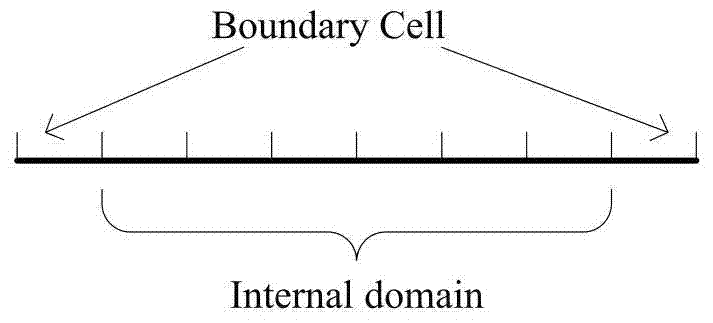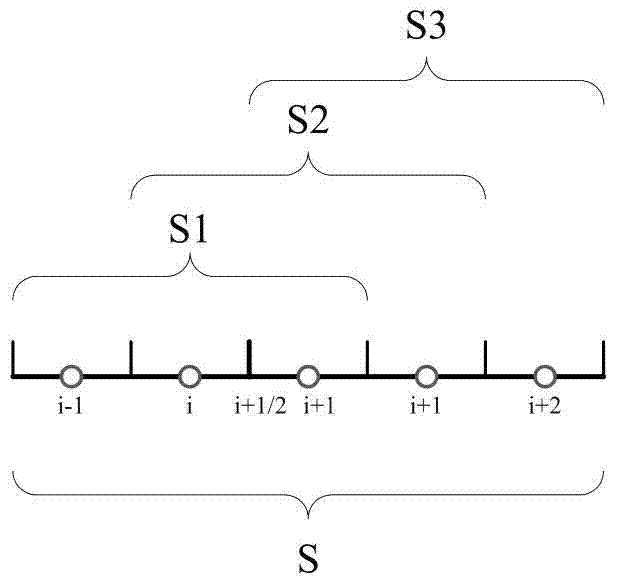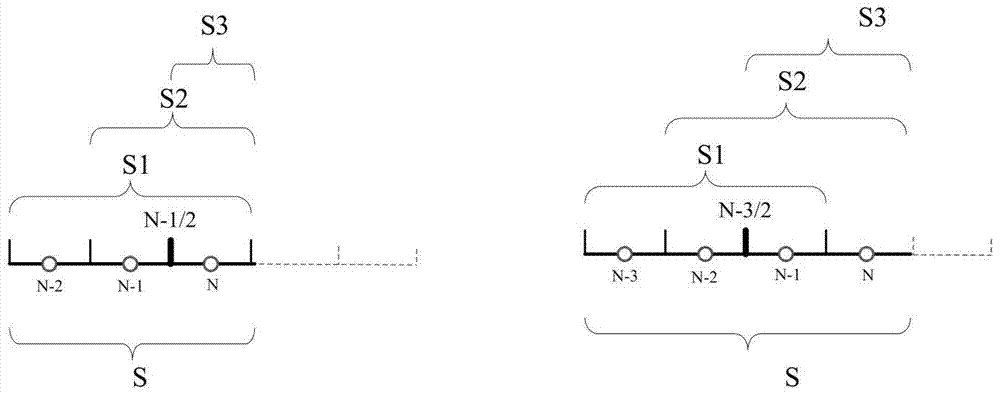A Boundary Processing Technique of Weno Difference Method
A differential method and boundary processing technology, applied in electrical digital data processing, special data processing applications, instruments, etc., can solve problems such as lack of high-order numerical methods, processing boundaries without compactness, and inability to handle complex boundaries.
- Summary
- Abstract
- Description
- Claims
- Application Information
AI Technical Summary
Problems solved by technology
Method used
Image
Examples
Embodiment Construction
[0023] First, we illustrate the main process of our algorithm for the one-dimensional scalar Burgers equation, such as figure 1 The area of the first step is divided into two parts, in which the WENO-FD part on the left is the internal unit area, and the DG grid on the right is the boundary unit area.
[0024] The specific implementation process of WENO-FD in the internal area is as follows:
[0025] First, we do not consider flux splitting, assuming f'(u)>0, then in unit I i The conserved finite difference scheme is
[0026]
[0027] where u i (t)=u(x i ,t) is unit I i the point value at the midpoint, For the numerical flux can be expressed as
[0028]
[0029] Such as figure 2 Except for the two fluxes at the boundary of the internal unit, most of the internal unit fluxes we choose figure 2 The template S=(S 1 ,S 2 ,S 3 ), flux in Then It is obtained by Lagrangian interpolation of the value of the unit contained in each small template. For the 5rd...
PUM
 Login to View More
Login to View More Abstract
Description
Claims
Application Information
 Login to View More
Login to View More - R&D
- Intellectual Property
- Life Sciences
- Materials
- Tech Scout
- Unparalleled Data Quality
- Higher Quality Content
- 60% Fewer Hallucinations
Browse by: Latest US Patents, China's latest patents, Technical Efficacy Thesaurus, Application Domain, Technology Topic, Popular Technical Reports.
© 2025 PatSnap. All rights reserved.Legal|Privacy policy|Modern Slavery Act Transparency Statement|Sitemap|About US| Contact US: help@patsnap.com



